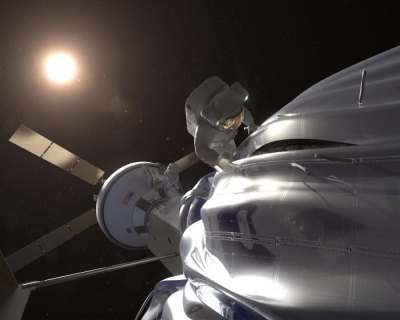Asteroid project will be dry run for Mars

Astronauts will explore an asteroid. Image: NASA.
NASA spokesmen announced this week that the agency had decided on a direction for the asteroid initiative – specifically, to send a spacecraft to an asteroid, land, capture a boulder and move it into orbit around the moon. Astronauts will then make jaunts to lunar orbit to explore the boulder.
The project will help researchers study asteroids, those scary rocks hurtling through space, while simultaneously developing the technology needed for deep-space travel.
The technologies the space agency will use are similar to those needed to land on Mars, pointed out Robert Lightfoot, a NASA associate administrator, during a teleconference March 25.
NASA will launch a robotic spacecraft aimed at an asteroid in 2020. One year earlier, it will announce the specific asteroid chosen for the rendezvous. During the teleconference, Lightfoot specifically mentioned the asteroid 2008 EV5.
The mission is complex and comes with a $1.25 billion price tag. It will take six years, for example, just to move the boulder into orbit around the moon.
Beyond providing information about asteroids, which scientists believe played a vital role in formation of Earth, the robotic spacecraft will test navigation technology needed in deep space. It will also test technology that could be used to divert an asteroid headed for Earth.
Then, in the mid-2020s, astronauts will travel to lunar orbit on the Orion spacecraft, rendezvous with the robotic spacecraft and take samples from the asteroid. They also will test skills needed during missions to Mars, according to NASA.
Asteroids are common and defined as “metallic, rocky bodies without atmospheres that orbit the Sun but are too small to be classified as planets,” according to the space agency.
Related:
NASA's asteroid plans: A primer
NASA in Brief: Spacecraft nears Ceres

